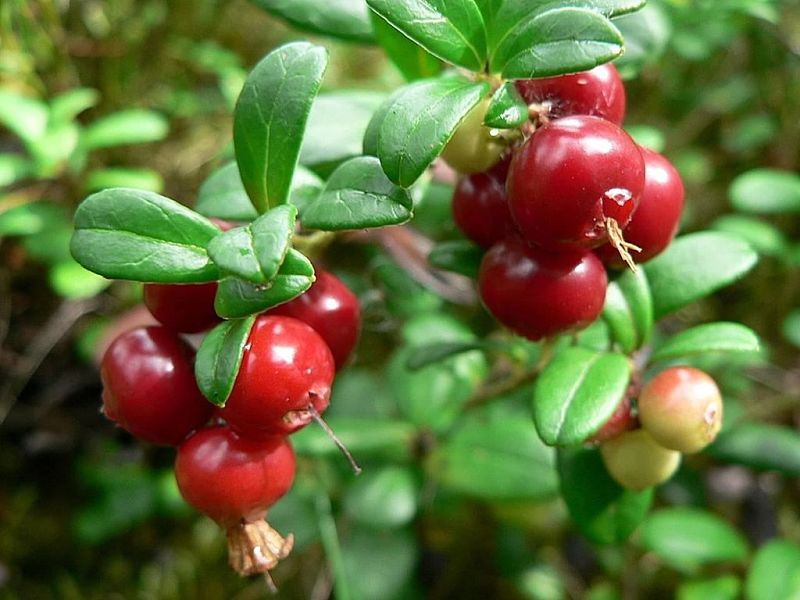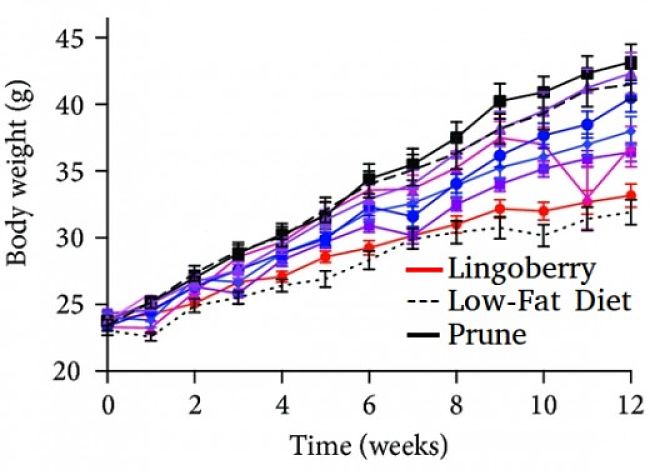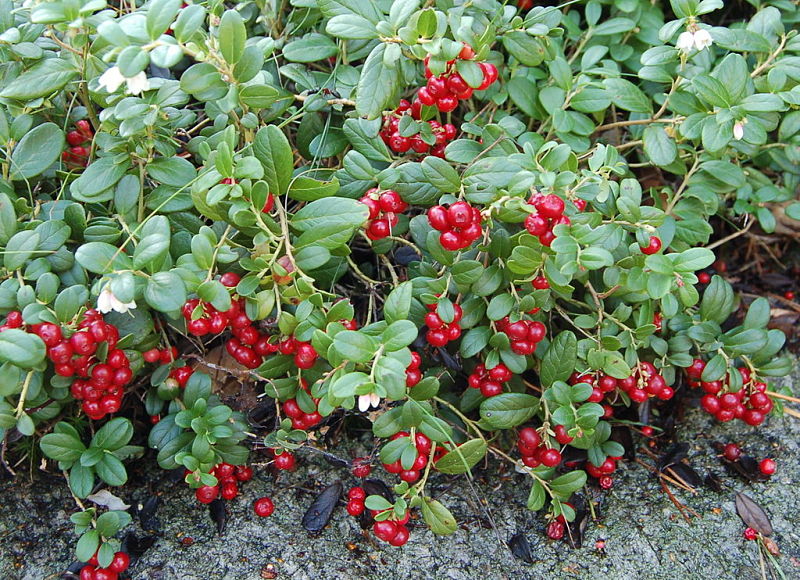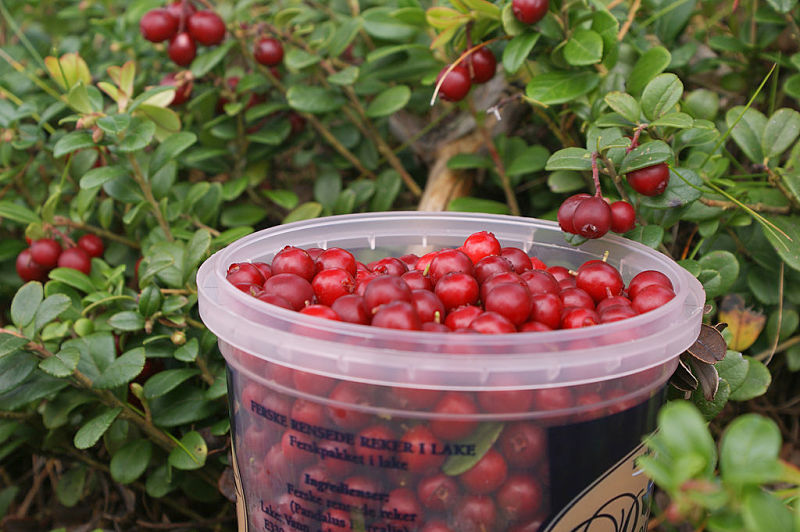Lingonberries Health Benefits - Nutrition Facts, Uses and Serving Tips
Lingonberries (Vaccinium vitis-idaea), sometimes referred to as cowberries, are are produced from a wild fruit tree in Scandinavia and neighboring areas. They are similar to blackberries in America, in the sense of being a wild fruit, that people pick themselves when they are ripe.
They are distantly related to the cranberry, but are smaller, juicer and rather tart. They grow wild in swampy areas. They are popular for making jam and they contain pectin and natural preservatives.
With a little added sugar they can be made into a simple conserve that does not require cooking.
Lingonberries are a renowned source of anti-oxidants, particularly polyphenols, the same compound the provides many of the benefits of green tea. There has been recent interest in Lingonberries as a weight control remedy. Studies in mice shown that test animals fed a high-fat diet did not gain weight as expected.
This article reviews this research and other claimed made for the health benefits of Lingonberries.
A chart shows how the nutrition facts for Lingonberries compared with those of similar berries: Blackberries, Blueberries, Cranberries, Elderberries, Mulberries, Raspberries, Strawberries.

Research Study on Effect of Lingonberries in Lowering Weight Gain of Mice, Fed a High-Fat Diet
A study conducted in Sweden showed that mice fed a relatively high amount of Lingonberries (20% of their food) showed virtually no increase in weight weight when fed a high-fat diet.The Lingonberries diet also lowered the levels of cholesterol and blood sugar.
Groups of mice were fed either a high-fat or a low fat diet. Within each group a subset of mice were fed lingonberry, bilberry, crowberry, blackberry, raspberry as well as prunes and blackcurrants.
After three months, the mice on the high-fat diet fed lingonberry, had similar weights to the mice on a low-fat diet (see image).
Also their insulin, cholesterol and blood sugar levels were similar to those of the mice eating a low-fat diet.
Bilberries and blackcurrants also stopped weight gain, but not as well as the lingonberries.
Further research is needed to understand the reasons for the results but the researchers speculated that it may be due to the high polyphenol content of lingonberries.
The results need to be confirmed in humans. Also the diet of the mice was up to 20% lingonberries, which is unrealistic for humans. Nevertheless the findings were significant and the mechanism is worthy of further investigation. The researchers also warned that boiling to berries to make jam can affect the nutrient content, but this needs to be tested.

Nutrient Data for Lingonberries in Comparison with Other Berries
The table below compares nutrient data for 100g of Lingonberries compared with Blackberries, Blueberries, Cranberries, Elderberries, Mulberries, Raspberries, Strawberries.
A simple overall overall score for macro-nutrients, vitamins and minerals was used to rank the berries.
► For vitamins, the score was derived by scaling each of the key Vitamin levels so that the berry with the highest level for each vitamin received a maximum score of 100. For example, Strawberries had the highest level of Vitamin - 59 mg/100g.
Each of the Vitamin C concentrations for the berries was multiplied by 100/59 to derive the Vitamin C score. The scores for the other vitamins, derived in the same way, were added to produce an overall score. Each vitamin included made an equal contribution to the overall vitamin score.
The ranking of the berries from highest to lowest for vitamins was:
was:
- Elderberries
- Raspberries
- Mulberries
- Strawberries
- Blackberries
- Lingonberries
- Blueberries
- Cranberries
► For minerals, the score was derived in a similar way to that for the Vitamins, so that each mineral contributed equally to the over mineral score. The berry with the highest level for the suite of minerals included received the highest score. The ranking of the berries from highest to lowest for nutrient was:
- Mulberries
- Blackberries
- Raspberries
- Elderberries
- Lingonberries
- Strawberries
- Cranberries
- Blueberries
► For macro-nutrients the levels of protein and fiber were scaled so that the maximum level was equivalent to 100 in a similar way to that for vitamins and minerals. These score were added and the calorie level, multiplied by two was subtracted from the total. The ranking of the berries from highest to lowest for macro-nutrients
was:
- Blackberries
- Raspberries
- Mulberries
- Elderberries
- Cranberries
- Lingonberries
- Strawberries
- Blueberries
Clearly Lingonberries did not rank very highly in terms of these nutrient scores. The nest berries overall were Blackberries, Raspberries and Mulberries.
The stand-outs nutrients for Lingonberries were:
► Relatively high fiber
► Good levels for B-group vitamins Thiamin, Riboflavin, Niacin
► Moderate Calcium, Zinc, Copper and Iron,
| Serving Size 100g | Lingonberry | Blackberry | Blueberry | Cranberry | Elderberry | Mulberry | Raspberry | Strawberry |
|---|---|---|---|---|---|---|---|---|
| Calories (kcal) | 53 | 43 | 57 | 46 | 73 | 43 | 52 | 32 |
| Protein (g) | 0.8 | 1.39 | 0.74 | 0.4 | 0.66 | 1.43 | 1.2 | 0.67 |
| Total Fat (g) | 1.2 | 0.49 | 0.32 | 0.14 | 0.5 | 0.4 | 0.65 | 0.31 |
| Total Carbs (g) | 11.5 | 9.61 | 14.49 | 12.2 | 18.4 | 9.8 | 11.94 | 7.68 |
| Dietary Fiber (g) | 3.7 | 5.28 | 2.43 | 4.6 | 7.03 | 1.67 | 6.5 | 1.94 |
| Vitamins | **** | **** | **** | **** | **** | **** | **** | **** |
| Vitamin C (mg) | 11 | 20.97 | 9.73 | 13.4 | 36 | 36.33 | 26.2 | 58.75 |
| Thiamin (mg) | 0.05 | 0.01 | 0.04 | 0.02 | 0.07 | 0.03 | 0.032 | 0.03 |
| Riboflavin (mg) | 0.04 | 0.03 | 0.04 | 0.02 | 0.06 | 0.1 | 0.038 | 0.03 |
| Niacin (mg) | 0.5 | 0.65 | 0.42 | 0.1 | 0.5 | 0.63 | 0.6 | 0.39 |
| Panto. Acid (mg) | 2.4 | 0.28 | 0.12 | 0.3 | 0.14 | 0.05 | 0.13 | |
| Vitamin B6 (mg) | 0.01 | 0.03 | 0.05 | 0.06 | 0.23 | 0.07 | 0.1 | 0.04 |
| Folate (mcg) | 2 | 25 | 5.41 | 0 | 5.52 | 6.67 | 21 | 23.61 |
| Vitamin B12 (mcg) | 0.12 | 0 | 0 | 0 | 0 | 0 | 0 | 0 |
| Vitamin A (IU) | 214 | 54 | 60 | 600 | 27 | 2 | 13 | |
| Vitamin E (mg) | 0 | 1.17 | 0.57 | 1.2 | 0.87 | 0.87 | 0.29 | |
| Vitamin K (mcg) | 19.86 | 19.32 | 5 | 7.67 | 7.8 | 2.22 | ||
| Minerals | **** | **** | **** | **** | **** | **** | **** | **** |
| Calcium (mg) | 20 | 29.17 | 5.41 | 8 | 38.62 | 40 | 25 | 16.67 |
| Iron (mg) | 0.4 | 0.63 | 0.28 | 0.24 | 1.6 | 1.87 | 0.69 | 0.42 |
| Magnesium (mg) | 9 | 19.44 | 5.41 | 6 | 5.52 | 16.67 | 22 | 12.5 |
| Phosphorus (mg) | 16 | 22.22 | 12.16 | 12 | 38.62 | 36.67 | 29 | 23.61 |
| Potassium (mg) | 89 | 162.5 | 77.03 | 84 | 280 | 193.33 | 151 | 152.78 |
| Sodium (mg) | 2 | 1.39 | 1.35 | 2 | 5.52 | 10 | 1 | 1.39 |
| Zinc (mg) | 0.18 | 0.53 | 0.16 | 0.1 | 0.11 | 0.13 | 0.42 | 0.14 |
| Copper (mg) | 0.07 | 0.17 | 0.05 | 0.06 | 0.06 | 0.07 | 0.1 | 0.06 |
| Manganese (mg) | 3.2 | 0.65 | 0.34 | 0.36 | 0.1 | 0.39 | ||
| Selenium (mcg) | 0 | 0.42 | 0.14 | 0.2 | 0.55 | 0.67 | 0.4 | 0.42 |
| Fatty Acids | **** | **** | **** | **** | **** | **** | **** | **** |
| Saturated Fat (g) | 0 | 0.01 | 0.03 | 0.02 | 0.03 | 0.03 | 0.02 | 0.01 |
| Monounsat. Fat (g) | 0.1 | 0.04 | 0.05 | 0.02 | 0.08 | 0.03 | 0.06 | 0.04 |
| Polyunsat. Fat (g) | 0.8 | 0.28 | 0.15 | 0.06 | 0.25 | 0.2 | 0.38 | 0.15 |
| Vitamin Score | 300 | 472.08 | 299.77 | 295.6 | 587.2 | 528.67 | 528.8 | 526.25 |
| Mineral Score | 292.7 | 385.22 | 145.659 | 147 | 371.6 | 424.529 | 381.8 | 264.034 |
| Macro Nutrient Score | 24 | 116.9 | -13.6 | 28 | 40.8 | 47.5 | 110 | 21.7 |

